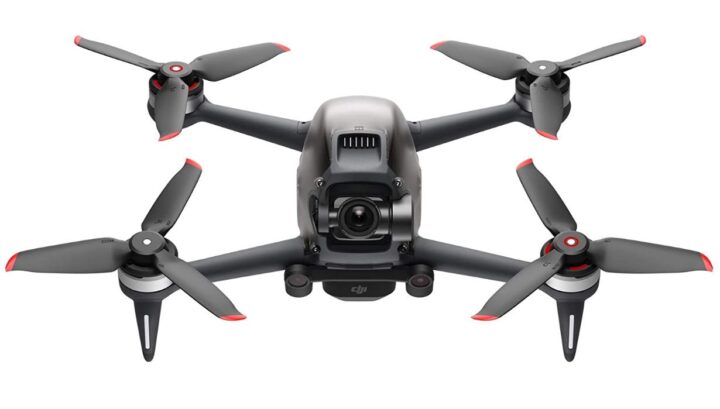Drones with night vision camera
Drone technology has come a long way, and drones with night vision cameras are changing the visual game. Imagine the delight of shooting captivating airborne images long after the sun has set.
Whether you’re a professional photographer, a nature lover, or simply an adventurer looking for fresh perspectives, drones with night vision cameras provide unprecedented opportunities to capture spectacular moments in low-light scenarios.
This article is intended to assist a new buyer in selecting the best deal on night vision drones. It will also highlight the key features to look for, as well as a list of drones that offer the best value for money.
Best Drones With Night Vision Camera-Top Picks
| Product | Image | Best Price |
| DJI Mavic Air 2 Fly More Combo | 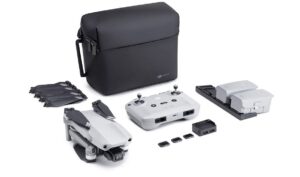 |
|
| DJI Air 2S Drones |  |
|
| Autel Robotics EVO 2 Pro V2 Drone | 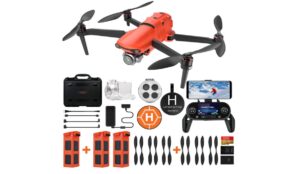 |
|
| DJI Mavic 3 Drones | 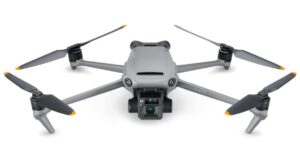 |
|
| Walkera F210 Racer quadcopter Drone | 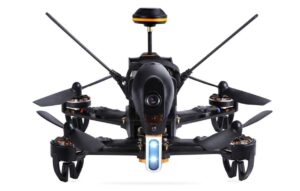 |
|
| DJI Phantom 4 Pro V2.0 Drones | 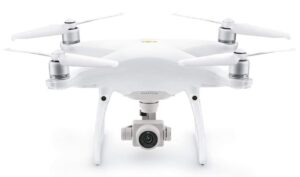 |
The detailed reviews….
1. DJI Mavic Air 2 Fly More Combo

The DJI Mavic Air 2 shines on performance as well as portability. Good performance is courtesy of its powerful 4k camera which uses a potent quad-Bayer image sensor. And adds intelligent shooting modes to give you captivating photos like no other.
The drone has a remarkable flying time of 34 minutes which is a decent time for all your thrilling shots. It also features a video transmission distance of 10km that helps you cover a considerable area.
The other attractive features of this drone are; an intelligent tracking system that locks the camera on a target as you fly freely past it. obstacle sensing in 3 directions, low-noise propellors, and compatibility with numerous versions of Android and iOS.
Features
- 1/2″ CMOS Sensor
- 48MP Photo
- 4K/60fps HDR Video
- 34-Min Max Flight Time
- 10km 1080p Transmission.
- 3-directional obstacle sensing
- Dimensions: 180 × 79 × 84 mm
- Weight: 570g
2. DJI Air 2S Drones

If you need a drone with the best performance. And equipped with numerous autonomous functions then this is the best choice. This night vision drone uses a 1-inch CMOS sensor to accurately capture photos in low light. The drone gives you full-color images because it’s able to identify up to 1 billion colors. The captured images are then transmitted using an effective OcuSync transmission technology. That gives it a reliable image feed.
When using the DJI Air 2s drone you spend less worrying about obstacles because the drones come with an environmental sensing feature. This feature can perceive obstacles in four directions. This helps it to tactfully evade obstacles while still giving you clear shots of your target.
The other attractive characteristics of these drones are; a 12 km transmission distance, a 31-minute flying time, and target locking. The drone is also portable and lightweight.
Features
- 20MP photo
- 1” CMOS sensor
- 31-min max flight time
- 4K/30fps Video
- 12Km transmission
- 4-directional obstacle sensing
- Dimensions: 180×97×77 mm
- Weight: 595g
3. Autel Robotics EVO 2 Pro V2 Drone

The Autel Robotics Evo drone gives you excellent value for your money. This is because it comes at a fair price and carries numerous features and accessories. It also features a cool rugged design.
This drone gives you high-quality images thanks to the highly sensitive 1-inch CMOS sensor. It can take photos with 20MP resolution and videos of 6K quality. The image quality is further enhanced by the use of an adjustable aperture with a range from f2.8 to f11 and a maximum ISO of 12800.
The drone uses a 7100mAH battery that gives it a flying time of 40 minutes. And the extra 2 batteries it comes with, increase the flying time up to 2 hours. The drone has a transmission distance of 9km where it can manage to seamlessly transmit high-quality images. It manages a top speed of 45mph and can comfortably evade obstructions using an omnidirectional obstacle-sensing system.
Other features of the Autel Robotics Evo 2 are; low noise propellors, a variety of shooting modes, object tracking, and an automatic return home feature. These drones have also not yet been programmed into the NFZ systems. Which means you’ll have no flight restrictions.
Features
- 1” CMOS sensor
- 20MP photo
- 9Km transmission
- Omnidirectional obstacle sensing
- 6K video resolution
- 40-mins flying time
- Dimensions: 228 x 133 x 110 mm
- 8GB internal storage
- Interchangeable camera.
- Weight: 2.6lbs.
4. DJI Mavic 3 Drones

This drone tries to maximize the flying time at the same time giving the users high-quality images at an affordable price. This has been achieved with the use of a 4/3” CMOS sensor that is capable of giving you high-quality 20MP photos in dim light. With clearly defined colors.
The drone has a remarkable flying time of 46 minutes and will seamlessly transmit high-definition images at a range of 15 km. It also includes a unique tele camera feature with 28x hybrid zoom. A feature that enables you to shoot at a target from a distance without being noticed.
The drone is fitted with multiple-angle obstacle sensors that help it plan a safe flight on its own. It also has a smart return-to-home that is activated by a low battery. And brings the drone back home using the fastest and safest route.
Features
- 4/3” CMOS sensor
- 20MP photo
- 46-min flying time
- 1K/50fps video
- 15 km transmission
- Omnidirectional obstacle sensing
- Dimensions: 221 × 96 × 90 mm
- Weight: 895g
5. Walkera F210 Deluxe Racer Quadcopter Drone

The Walkera F210 is ideal for someone who requires a budget drone that can be used in low-light situations. The drone is small, agile, and gives a decent performance for the price. It’s able to achieve this by the use of a brushless motor, streamlined design, and a body made from carbon fiber material. The drone is also robust featuring protective mechanisms like; a protective cover, an anti-crash system, and a guard landing cushion frame to protect the motor.
Image quality isn’t exemplary at only 1MP but the images are well-defined because the drone is stable on the move. And uses high-performance sensors that can identify up to 1 million colors. The drone sensors can also adjust their sensitivity depending on the ambient light.
The drone manages a transmission range of 800 meters and uses a 1200mAh to give it a flying time of 12 minutes. These values may seem small but the drone costs half as much.
Features.
- 1mp Photo (700TVL resolution)
- Dimensions: 182 x 182 x 103mm
- 800m Transmission distance
- 12-mins flying time
- Charging time 1.5 hrs.
- Weights 528g
6. DJI Phantom 4 Pro V2.0 Drones

The DJI Phantom 4 is a high-performing professional drone, that not only gives you a high maximum speed of 72 kph but also excellent quality images and videos. It uses an f/2.8 wide-angle lens. And a 1-inch 20MP CMOS sensor with a mechanical shutter to reduce the distortion of the imagery experience with a rolling shutter.
The drone has an 8km transmission range and can fly for 30 minutes. Although this duration is similar to most of the competition, this drone has one of the lowest charge times of 58 minutes at most.
The drone uses a 5-direction obstacle sensing when flying to minimize the risk of impact. And its aerodynamic design helps it to remain quiet. Other features include; an intelligent flight mode for tracking targets, a return to home feature activated by low battery, and tap fly and draw modes that help you plot the course by just using your finger to tap and draw on the screen.
Features.
- 1” CMOS sensor
- 5-directional obstacle sensing
- 30-minute flying time
- 8km transmission range
- 20MP image size
- 4k video resolution
- Video bitrate: 100mbps.
- Max speed: 72kph.
- Battery capacity: 5860mAh
- Dimensions: 1ft diagonal size
- Weights: 1375g
Night Vision vs Thermal vs Infrared
Night vision (Low Light Camera)
Traditional analog night vision employs an intensifier tube to amplify any available ambient lighting in order to form an image visible to the naked eye. A photocathode in analog night vision lenses converts photons in ambient light to photoelectrons.
The photoelectrons then strike a microchannel plate (MCP), generating thousands of secondary photoelectrons. This means that the initial ambient light has been increased by the now multiplied photoelectrons. A phosphor on the lens’s output side then converts the photoelectrons back to photons.
The night vision that is used on drones with a camera is the modern digital night vision. This type of night vision uses a CMOS sensor to amplify the ambient lighting and give an image under low light conditions.
When compared to analog night vision, digital night vision has numerous advantages. One of them is the ability to record videos and capture images; it is less expensive and will not be damaged when exposed to light.
Note that night vision requires ambient lighting to work. Therefore, you cannot view an image in complete darkness.
Infrared and Thermal Imaging
Infrared and thermal work in an almost similar fashion but only differ in the size of the wavelengths that they use. The infrared uses shorter wavelengths but thermal uses medium to long wavelengths. Also, note that none of these is visible to the naked eye.
Thermal sensors work by sensing heat rather than light surrounding an object. The heat differential between an object and its surroundings is then used to define an object.
Conversely, Infrared imagery uses an infrared illuminator to project infrared energy on an object. The projected energy then bounces back as a light, illuminating the area of interest/object.
Infrared is used together with night vision because it generates the ambient light necessary when the environment is pitch-dark.
Uses of Night Vision Drones
- Security Surveillance
- Photography
- Search and rescue
- News reporting
- Emergency delivery
- Wildlife management.
Drones With Night Vision Camera- Buying Guide
These are the characteristics to look for when buying a night vision drone that you can use to capture night videos.
Flying Time
The longevity of a drone in the air means that you can use it to cover a long area. It also means that more pictures and longer videos can be taken. This is an especially important feature to consider if you are using a drone for a search and rescue activity.
Quality of Imagery
The quality of the video and images of a drone depends on the resolution of the camera it uses. Confirm these specifications before making a purchase. Another thing that affects the quality of imagery is stability. An unstable drone means that the images taken will be shaky and blurry.
Durability
Drones can be delicate devices. Damage can result from accidents that impact the surface of the drone. It’s easy to determine the build quality of the drone from the type of material used and how it’s been put together. Drones are also fitted with obstacle sensing a feature that helps them keep free from impacts.
The durability is also determined by the lifespan of the battery. Make sure that the battery used is durable and also replaceable when it gets damaged.
Transmission distance
This means the total distance that can exist between the drone and its controller. A bigger transmission distance is useful if you are operating a drone in difficult-to-access areas. A good drone should have a transmission distance of at least 5km.
Weight & Dimensions
The weight and dimensions of a drone will affect its portability. If you need to be hauling your drone often. Then this is a characteristic you shouldn’t ignore. However, a very lightweight drone may find it difficult to operate in a windy area because the wind will veer it off the planned trajectory.
Price
Unfortunately, not everyone has a limitless budget, thus the drone one picks must be within a particular price range. Great drones are available at a variety of price points, but the most expensive ones will undoubtedly provide the finest performance. The drones on this list, however, strike the perfect balance between price and performance.
Thermal Imaging
Some modern drones contain thermal sensors that allow them to capture visuals in the form of thermograms when the conditions are too dark for night vision, even with infrared illumination. These drones, with their longer range, could be valuable in tasks such as search and rescue, where targets may be hidden behind obstructions.
How to Take Care of Night Vision Drones
Read the owner’s manual– This will give you insights on how to operate the drone properly to avoid damaging the components.
Inspect the drone- Always do this before a flight because a damaged drone may not be able to make it back home.
Avoid rain- The drone may be damaged if it’s exposed to water from the rain. unless stated otherwise in the user manual, avoid using a drone when it is raining.
Understand the laws– Several laws and regulations govern the operation of drones, and failure to follow these laws may result in the confiscation and loss of your drone. Before flying your drone in a specific region, make sure you are familiar with the local rules.
FAQs
What is a night vision drone?
A night vision drone is an unmanned aerial vehicle equipped with night vision capabilities, allowing it to capture images and video in low-light or complete darkness. This is achieved through infrared (IR) cameras or thermal imaging technology.
How far can a night vision drone see?
The range of vision depends on the type of night vision technology used. Infrared cameras generally have a shorter range, typically up to a few hundred feet, while thermal cameras can detect heat signatures from several thousand feet away.
What are the best drones for night use?
The DJI line of drones stands out for their versatility and the numerous features that they come with. In this lineup, one can easily find a drone within their budget and with the needed features.
CONCLUSION
Drones with the best night vision cameras not only give you captivating photography but also give you the freedom to work at night time. The drones reviewed in this article are some of the drones that will give you the maximum value for your buck. The buying guide provided will also help you to look for other alternatives not included on our list.
Related:
